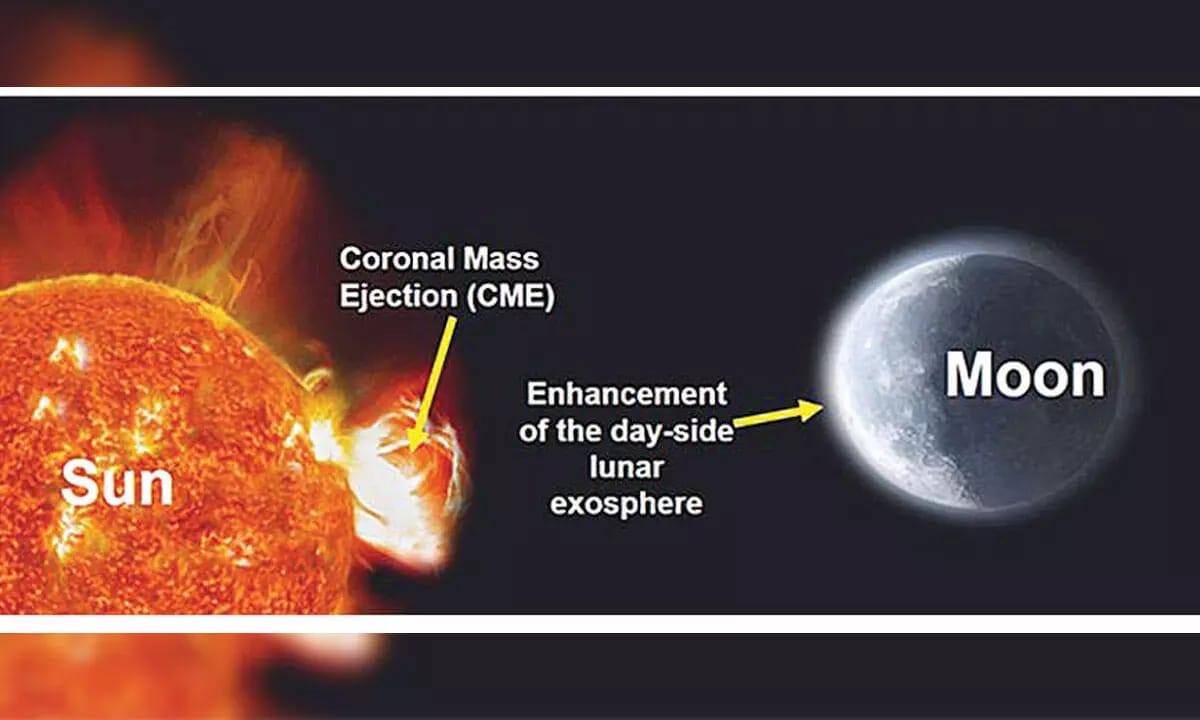India’s Chandrayaan-2 orbiter has made a world-first observation of a solar storm—specifically a Coronal Mass Ejection (CME)—altering the Moon’s exosphere. The CHACE-2 instrument recorded a dramatic spike in atmospheric pressure and density, confirming long-held theories and placing ISRO at the forefront of space weather research.
India’s lunar mission Chandrayaan-2 has quietly delivered a scientific breakthrough. While its lander may have faltered in 2019, the orbiter has continued to collect data—and now, it has captured the first direct evidence of the Sun’s violent outbursts affecting the Moon’s tenuous atmosphere.
Key highlights from the discovery:
- The event occurred during a major CME on May 10, 2024
A Coronal Mass Ejection is a massive burst of plasma and magnetic field from the Sun’s corona. When this solar storm reached the Moon, Chandrayaan-2’s CHACE-2 instrument detected a sharp rise in the dayside exosphere’s pressure and density.
- Molecule density increased by over tenfold
The Moon’s exosphere—its extremely thin outer atmosphere—saw a surge in neutral atoms and molecules, confirming theoretical predictions about solar impact on airless bodies.
- The Moon lacks a magnetic shield
Unlike Earth, the Moon cannot deflect solar particles, making it vulnerable to direct CME exposure. This vulnerability is now experimentally confirmed.
- Implications for future lunar missions
The findings are crucial for designing lunar bases and equipment that can withstand space weather. ISRO’s data will help inform shielding strategies for human missions planned by 2040.
- A milestone for ISRO and global science
This marks the first time any lunar mission has directly measured CME effects on the Moon’s atmosphere, placing India at the cutting edge of heliophysics and planetary science.
Why it matters:
Understanding how solar storms interact with the Moon is vital for space exploration. Chandrayaan-2’s silent orbit has yielded insights that could protect future astronauts and equipment, while deepening our grasp of space weather’s reach beyond Earth.
Sources: Indian Express, MSN News, Times of India, Orbital Today, Kashmir Reader

